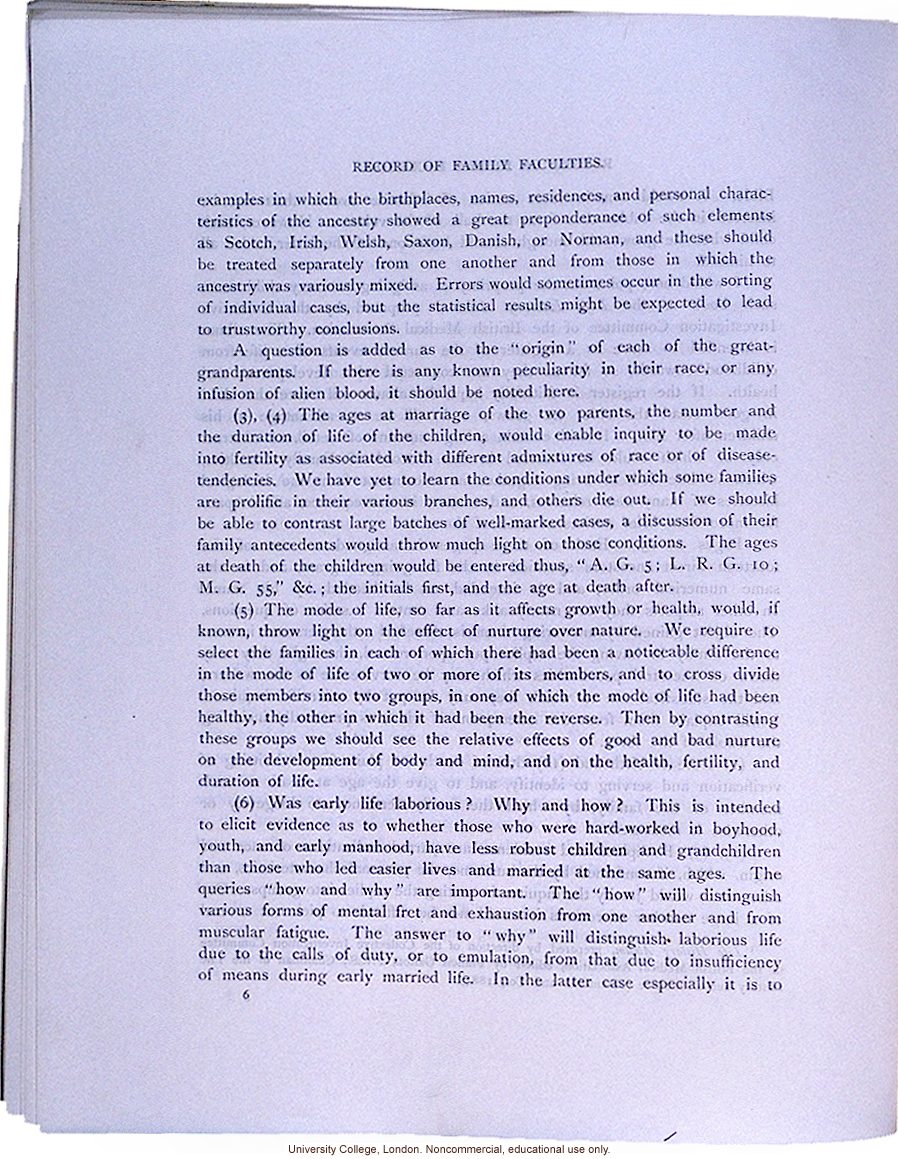Record of Family Faculties.
examples in which the birthplaces, names, residences, and personal characteristics of the ancestry showed a great preponderance of such elements as Scotch, Irish, Welsh, Saxon, Danish, or Norman, and these should be treated separately from one another and from those in which the ancestry was variously mixed. Errors would sometimes occur in the sorting of individual cases, but the statistical results might be expected to lead to trustworthy conclusions.
A question is added as to the "origin" of each of the great-grandparents. If there is any known peculiarity in their race, or any infusion of alien blood, it should be noted here.
(3), (4) The ages at marriage of the two parents, the number and the duration of life of the children, would enable inquiry to be made into fertility as associated with different admixtures of race or of disease-tendencies. We have yet to learn the conditions under which some families are prolific in their various branches, and others die out. If we should be able to contrast large batches of well-marked cases, a discussion of their family antecedents would throw much light on those conditions. The ages at death of the children would be entered thus, "A.G. 5; L.R.G. 10; M.G. 55," &c.; the initials first, and the age at death after.
(5) The mode of life, so far as it affects growth or health, would, if known, throw light on the effect of nurture over nature. We require to select the families in each of which there had been a noticeable difference in the mode of life of two or more of its members, and to cross divide those members into two groups, in one of which the mode of life had been healthy, the other in which it had been the reverse. Then by contrasting these groups we should see the relative effects of good and bad nurture on the development of body and mind, and on the health, fertility, and duration of life.
(6) Was early life laborious? Why and how? This is intended to elicit evidence as to whether those who were hard-worked in boyhood, youth, and early manhood, have less robust children and grandchildren than those who led easier lives and married at the same ages. The queries "how and why" are important. The "how" will distinguish various forms of mental fret and exhaustion fro one another and from muscular fatigue. The answer to "why" will distinguish laborious life due to the calls of duty, or to emulation, from that due to insufficiency of means during early married life. In the latter case especially it is to
6
[end]


